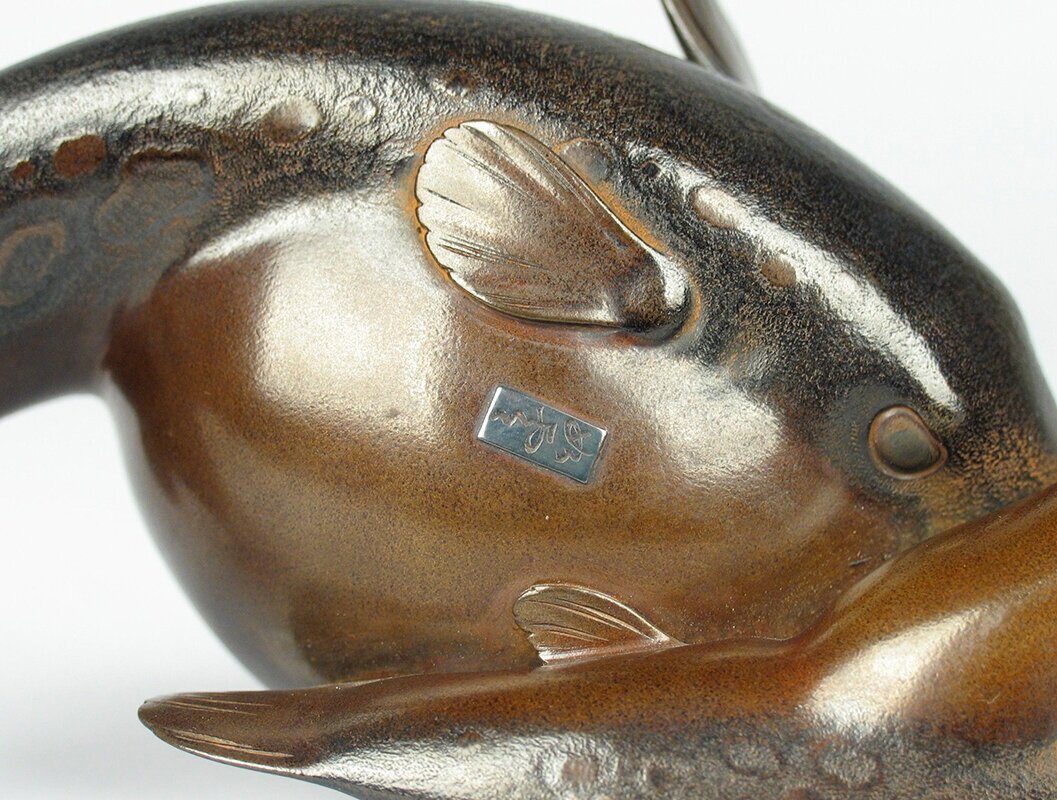MEIJI-TAISHO
OSHIMA JOUN, OKIMONO OF TWO FUGU OR BLOWFISH
Okimono or small sculpture in the form of two fugu or blowfish, the male puffed to protect his mate, of cast and patinated bronze, the eyes inlaid in shakudo. Signed on the reverse on an inlaid and chiseled silver tablet by the artist: Joun (Oshima Joun, 1858 – 1940). Taisho – early Showa era, circa 1912 – 1930.
With the tomobako or original box, inscribed on the exterior of the lid: Fugu Okimono or Blowfish Sculpture; and on the reverse of the lid signed by the artist: Ichijoken Joun Saku or Made by Ichijoken Joun, and sealed: Joun.
Oshima Joun was a professor at the Tokyo School of Fine Arts from 1890 until 1932, and famous for his great skill in casting. A vase by Oshima Joun is illustrated in the catalogue from the Museum of the Imperial Collections, Reappraisal of Meiji Art I: The Era of Meiji Bijutsu-kai and Nihon Kinko Kyokai, number 33, and one of his studies of swimming fish and waves is illustrated in The Nasser D. Khalili Collection of Japanese Art: Meiji No Takara: Treasures of Imperial Japan, Metalwork Part II, number 102.
A rare and charming example of this important artist’s work.
Oshima Joun, Okimono of Two Fugu or Blowfish
Artist Name: Oshima Joun
Period: Meiji Taisho
Mediums: Metalwork
Form: Okimono or Sculpture
Origin Country: Japan
2.25″ high x 5 5/8″ x 3 3/8″
This piece is no longer available.





